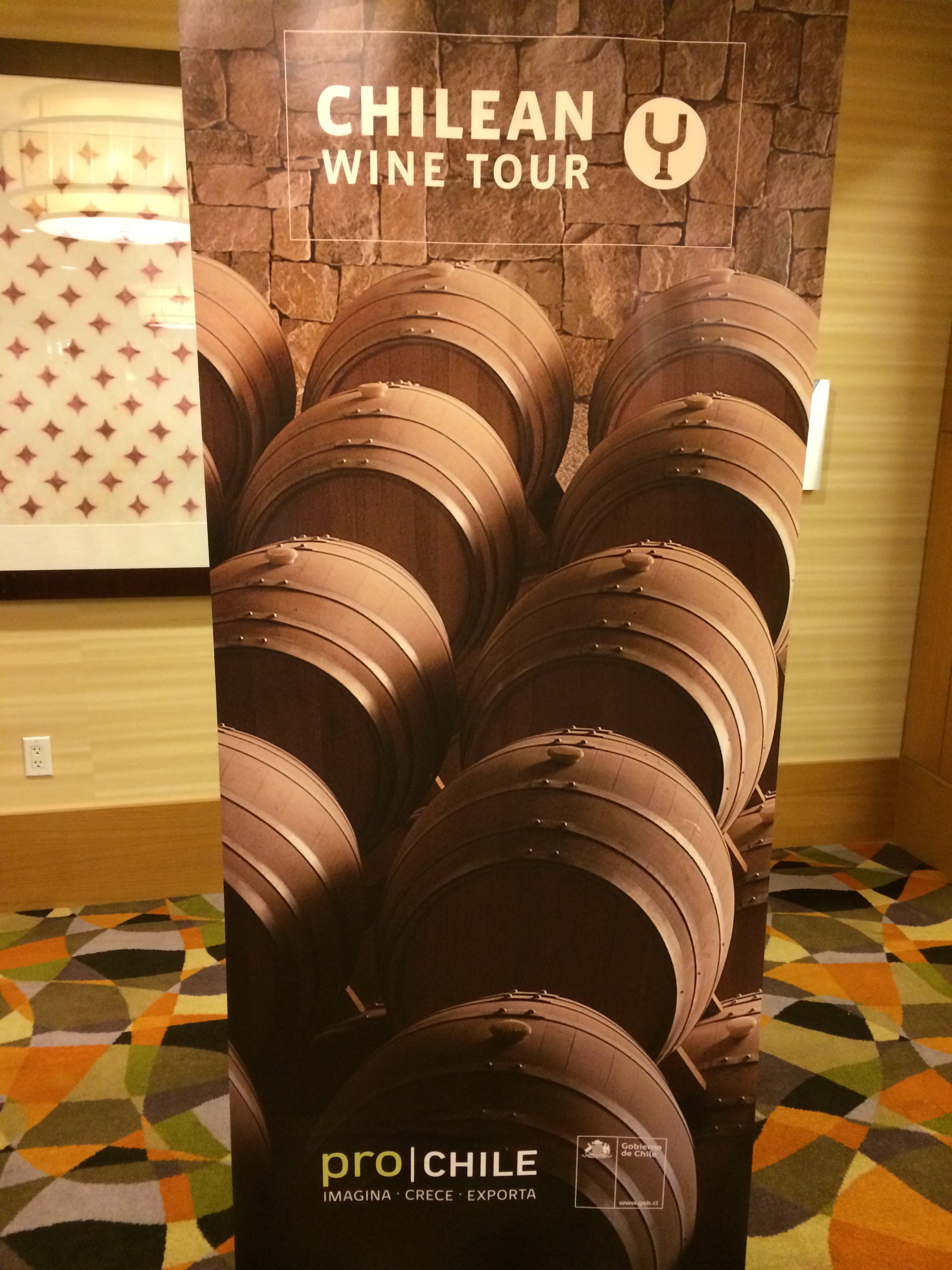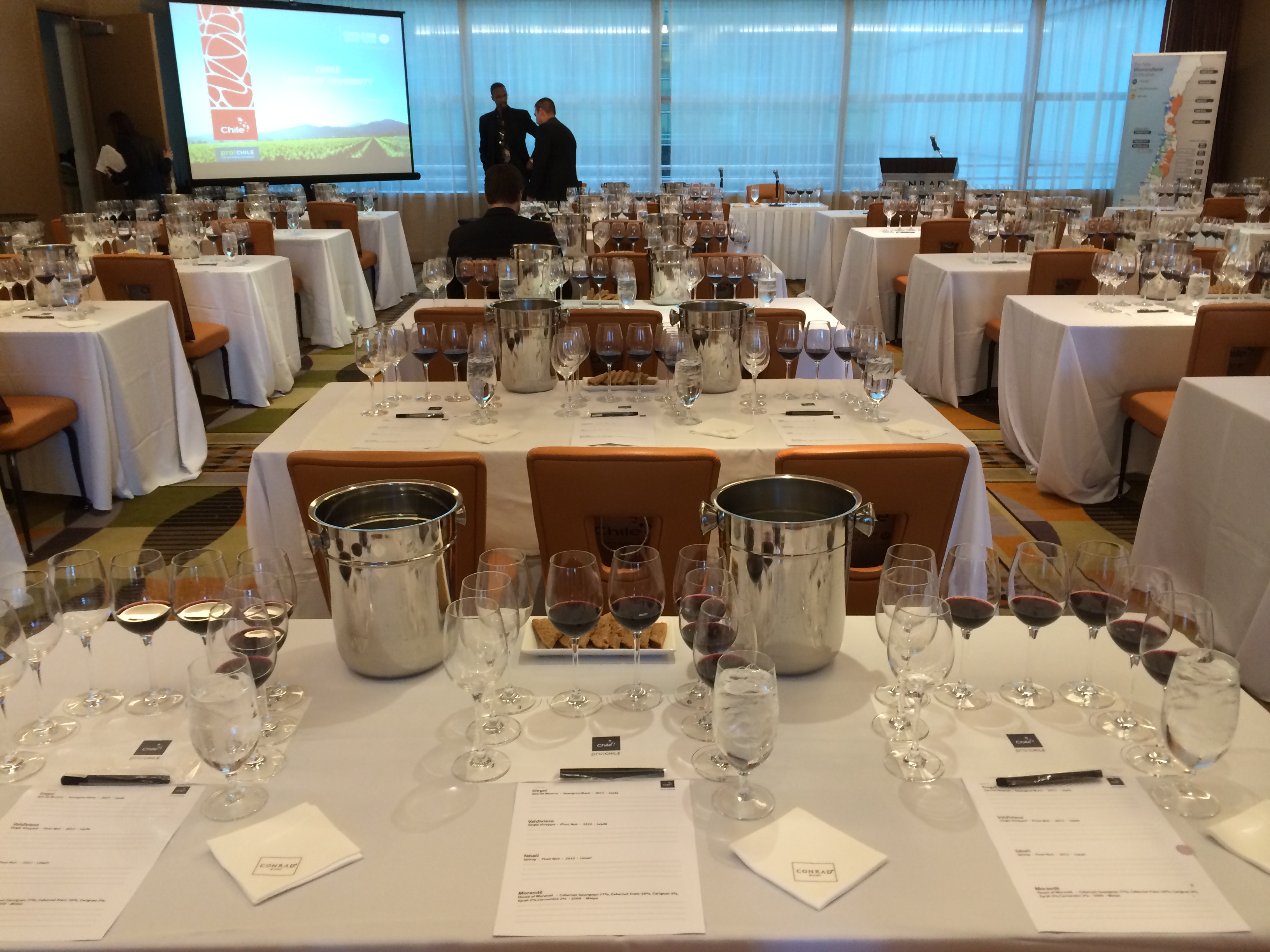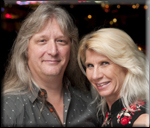
Yesterday evening, the ProChile Trade Commission in Miami hosted a Chilean Wine Seminar and tasting at the Conrad Hotel in Brickell. Chilean Winemaker Santiago Margozzini from Montgras Estates and Master Sommelier Fred Dexheimer conducted an educational presentation titled Chile: Land of Diversity and a Paradise for Viticulture. My wife and I arrived (on time) to a beautifully presented room set up to accommodate 60 or more guests interested in this stop in ProChile’s Chilean Wine Tour.
Santiago went through a slide presentation that highlighted just how diverse a country Chile really is, from the temperature to the rainfall to the geographic landscape to the soil. All of those factors have an extremely important impact on the country’s 16 wine-growing regions. And though diverse, the climate and isolation of the country is ideal for growing grapes. In addition to gentle winters and moderate summers, the lack of phylloxera, hail and bird attacks also contributes to the success of Chile’s growth in wine making over the past several decades. Twenty years ago, there were seven wine regions; today there are 16. Santiago explained that though it took some convincing, the regions are now classified in three groups based on the characteristics of the wines. That was done so wine makers could easily speak about their wines in such a way that would help promote their vineyards in a meaningful way. Those classifications are Costa, Entre Cordilleras, and Andes.
That’s when we began tasting the eight different wines in front of us, each chosen to represent the different viticulture regions of Chile. Santiago and Fred both led the tasting, speaking about the wineries and characteristics of each wine and how it was made. We started with a Sauvignon Blanc from Siegel made in the coastal area of Leyda. It was explained that the cold temperatures from the Pacific Ocean were key to growing this grape to perfection. Sauvignon Blanc is the #1 exported grape variety from Chile.
We were then asked to compare two different coastal Pinot Noirs from Valdivieso and Tabali. While I’m not exactly a wine expert, it was not difficult to see and taste the differences. Fred explained that one of the areas had more variations in temperature and wind than the other. In addition, the soils in the two regions are very different and impart different characteristics to the wines. So same grape but different outcomes.  Pretty cool!

Fred continued “geeking out” on soil as we tried a Cabernet Sauvignon blend from Morande, grown in the “alluvial” soil of Maipo, representative of the foothills of the Andes. We were then given a Cabernet Sauvignon/Malbec blend from Viu Manent which sparked a little comparison to the Malbecs of Argentina. We were told that some of the best Malbecs in the world come from this Chilean region called the Colchagua Valley. However, these wines are very different than what you would find in neighboring Argentina as the climate and soil and age of their vines are not the same.
Finally we arrived to a wine made by Santiago, MontGras Antu Syrah. “This is the best wine of the night, hahaha,” quipped Santiago. He explained this was grown on a famous hill in the volcanic soil of Colchagua and would be classified as an Entre Cordilleras wine. My wife and I actually agreed that the sweet fruity aroma and delicious flavors made this our favorite of the evening. Also from Colchagua, we tasted a Cabernet Sauvignon/Merlot blend from Montes. Fred said this is a very well-known wine in the United States.
Our final wine of the seminar was another from MontGras, their Reserva Carmenere. We were told that Carmenere grapes are unique to Chile, though originally a French grape variety that was killed by phylloxera. Apparently, Chilean wine makers thought they were making Merlots though it was discovered that in fact it was a Merlot/Carmenere blend. Today, the best Carmenere wines are grown in sandy soil in a warm and sunny climate that allows the grapes to grow to a very ripe stage. This ensures a wine with round tannins and uniquely spicy characteristics. We liked this wine a lot too.
The evening then shifted to a tasting with many Chilean wineries. We tasted some additional wines and learned about some of the goals that each winery was pursuing. For some, it was just to get their name out in front of importers. We ate some cheese and fruits and hors d’oeuvres and mingled. It was an educational evening and fun to learn about one of Chile’s most important products!

